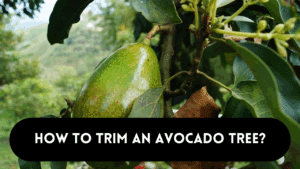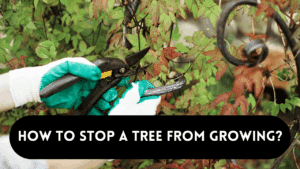With its association with the holiday season, mistletoe can be a wonderful addition to your trees. However, after the festivities are done, you could be left wondering how to efficiently remove mistletoe from your trees. We will look at a variety of techniques in this extensive tutorial to safely and effectively remove mistletoe from trees.
Understanding Mistletoe
What is it Mistletoe?
When mistletoe grows on tree branches, it becomes a parasitic plant that can injure the host tree if it is not removed. It can be identified by its emerald-green foliage and striking white berries.
Why remove mistletoe?
Mistletoe must be removed if you want to keep your trees healthy. This parasitic plant has the potential to weaken the tree, increasing its susceptibility to ailments and shortening its lifespan.
How to Remove Mistletoe from Trees?
Examination of Your Trees
Start by carefully analyzing your trees. In the upper branches, keep an eye out for clusters of green leaves and white berries.
Differentiating between types
Mistletoe comes in two basic varieties:
leafy: Leafy mistletoe has thick, green leaves
Dwarf: Dwarf mistletoe is less visible and has thicker, greener leaves than leafy mistletoe.The optimum removal technique can be chosen with the help of the type.
Preparing for Removal
Tools to remove mistletoe:
To remove mistletoe effectively, you’ll need the following tools:
- Pruning shears
- Ladder (if necessary)
- Gloves
- Garbage bags
Safe Mistletoe Removal
Cut Off Infected Branches
Carefully trim the mistletoe-covered branches with your pruning shears. Cut as closely as you can to the connection place.
Properly dispose of mistletoe
Mistletoe trimmings should be placed in trash bags and disposed of in accordance with local laws. Mistletoe shouldn’t be composted since it can infect other trees.
Getting Rid of Current Infestations
Regular Tree Inspection
Conduct routine tree inspections and swiftly remove any new growth to prevent mistletoe issues in the future.
Encourage healthy trees
Mistletoe infestations are less common in healthy trees. Pruning, fertilizing, and properly watering your trees can all increase their resistance.
Mistletoe Removal from Trees Has a Number of Advantages
Tree Health:
A major advantage is better tree health. The parasitic plant known as mistletoe adheres to tree branches and takes nutrition and water from the host tree. This can weaken the tree over time, making it more susceptible to illnesses and other stresses. Mistletoe removal aids in the tree’s recovery of its health and vitality.
Longer Tree Lifespan:
If mistletoe isn’t treated, it might slowly deteriorate the tree to the point where it could pass away too soon. Your trees’ lifespan can be increased by eliminating mistletoe, ensuring their continued health for many years to come.
Enhancing the Look of the Tree
Mistletoe clusters can be ugly, especially if they develop in conspicuous areas of the tree. The tree becomes more aesthetically pleasing by having the mistletoe removed.
Lower Risk of Mistletoe Spread:
Mistletoe can develop seeds that can spread to neighboring trees via birds. You can stop mistletoe from spreading to nearby trees by quickly removing it.
Preventing branch damage can reduce the danger of branches breaking during storms or strong winds. As mistletoe grows, it can bend and weaken tree branches. Mistletoe removal lowers the risk of branch damage and potential dangers.
Can I remove mistletoe during any season?
The dormant season, which normally lasts from late winter to early spring, is the ideal time to remove mistletoe from trees. Since the tree is not actively developing at this time, mistletoe is simpler to locate and remove without putting the tree under further stress.
Are There Natural Predators for Mistletoe Removal?
Yes, there are mistletoe natural enemies, although how well they manage infestations of the plant varies. A few of these innate predators are:
Birds:
Some kinds of birds, such as the mistletoe bird or flowerpecker, are essential for disseminating mistletoe seeds. They consume the mistletoe berries and then eject the seeds onto other trees’ branches. While it’s possible that this doesn’t directly affect mistletoe development, it does help the plant spread to new regions.
Aphids and scale insects
These are known to feed on mistletoe bushes and other insects as well. Although their feeding activities can diminish mistletoe to some extent, they might not always offer efficient management, especially in infestations that have already become established.
Fungi:
Various fungus species have been discovered to infect and harm mistletoe plants. These fungi may inhibit the growth of mistletoe and weaken it.
FAQS
What is mistletoe, and why should I get rid of it?
Mistletoe is a parasitic plant that attaches itself to trees. It can injure the host tree by robbing it of nutrients and water, potentially leading to tree decline or death.
When is the ideal time to remove mistletoe?
The optimum time to remove mistletoe is during the dormant season (late autumn to early spring), when it is most apparent and easier to spot.
How do I detect mistletoe on my trees?
Look for clusters of green, leafy growth in the tree’s branches, typically with distinctive berries. Mistletoe is normally green, even in winter when host trees are leafless.
What equipment do I need to remove mistletoe?
Pruning shears, loppers, or a handsaw for cutting mistletoe stems, and a ladder or pole pruner for high branches
How can I effectively remove mistletoe?
To ensure full removal, cut the mistletoe stems at least 12 inches below the point where they join the tree branch.
Conclusion
Removing mistletoe from your trees is not only a matter of aesthetics but also a crucial step in safeguarding the long-term health and vitality of your beloved green friends. Even though it looks festive, mistletoe seriously jeopardizes the health of trees by stealing their hosts’ essential nutrients and water.
For healthy tree maintenance, it’s essential to do routine inspections, identification, and removal throughout the dormant season. So start this adventure of caring for your trees today, and you’ll not only preserve them for future generations but also maintain the beauty of your natural surroundings.



